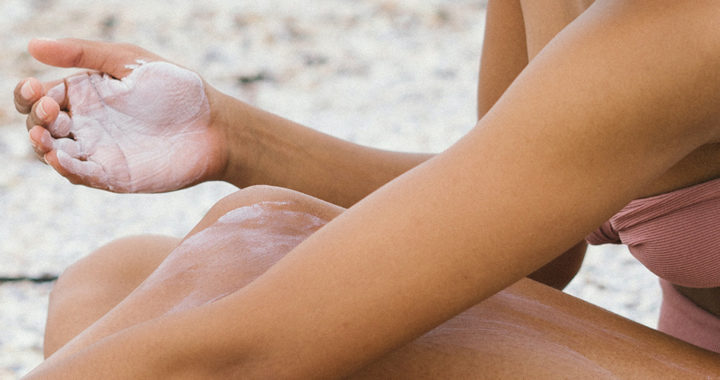Sunscreens have become essential in skin care due to the protection they provide from the harmful ultraviolet radiation coming from the sun. Other skincare products such as toners and serums have also included protection benefits against UVA and UVB radiation in their formulation through the addition of chemical or physical sunscreen actives.
Nevertheless, to appreciate further the importance of these products in maintaining a healthy skin appearance and lessening the risks from diseases caused by exposure to the sun, it is also essential to understand how sunscreens work.
The Science of Sunscreens: How Do These Products Protect Us From Ultraviolet Radiation
Remember that exposure to UVA and UVB radiation can result in different health problems. UVB does not penetrate deeply into the skin, but it can cause sunburn, damage to the DNA, and skin cancer. UVA penetrates deeper, and it produces free radicals that can alter the DNA of skin cells, cause premature skin aging, and result in immunological problems.
Sunscreens generally work by neutralizing UV radiation. However, different active ingredients have different ways of doing so. For starters, it is important to note the two different categories of sunscreens: physical sunscreen and chemical sunscreen.
The following are the difference between the two, as well as the different ways they protect the skin from UV radiation:
• Physical Sunscreen: Mineral compounds such as titanium dioxide and zinc oxide are inorganic pigments that work by leaving a thin physical barrier on the skin that mainly reflects and/or scatters, as well as absorbs ultraviolet radiation, thus preventing UVA and UVB from penetrating deeper into the skin.
• Chemical Sunscreen: Specific organic chemicals added to the formulation also form a thin layer on the skin. They work primarily by absorbing UV radiation, although some chemicals have reflective properties. Examples include avobenzone, octisalate, octocrylene, oxybenzone, homosalate, and octinoxate.
Fundamentally, the effectiveness of a particular sunscreen will depend on the choice of active ingredients and the overall formulation. To prove this point, take note that titanium dioxide and zinc oxide provide different levels of protection.
Titanium dioxide is effective at reflecting UVB rays and some UVA rays. However, it is less effective against UVA II and almost entirely ineffective against UVA I. Zinc oxide provides broad-spectrum protection because it works against both UVB and UVA rays.
A formulation consisting primarily of zinc oxide is a broad-spectrum sunscreen. Note that this mineral compound is more expensive than titanium dioxide. To cut the cost, formulators and manufacturers can use a certain percentage of zinc oxide and supplemented the formulation with a specific percentage of titanium dioxide.
It is also important to note that a particular sunscreen can only provide a certain period of protection from sun exposure. All products require reapplication as well. Information about the protection capabilities of specific products could be found on the label. Hence, it is imperative for consumers to choose a particular sunscreen product suitable for their use-case situations.
Below is a quick guide and explainer to the rating systems used by manufacturers in product labeling:
1. Sun Protection Factor or SPF
An SPF or sun protection factor rating tells how long it takes before an average person develops sunburn from UVB radiation exposure. The number attached after the abbreviation represents a fraction of UVB radiation that reaches the skin. Hence, an SPF 30 means that 1/30th of the burning radiation will reach the skin.
A user can determine further the suitability of a sunscreen by multiplying the SPF by the length of time it takes before his or her bare skin suffers a burn. For example, if it takes a person 10 minutes before he or she develops sunburn, then a product with an SPF 30 will provide him or her an additional 300 minutes or 5 hours of protection.
Note that an SPF rating only pertains to protection from UVB radiation. It is an imperfect information because damages due to UVA radiation are invisible. Remember that UVA exposure does not produce redness and pain.
2. Protection Grade of UVA
The Protection Grade of UVA or PA system is another rating system used in Japan and other Asian countries to provide information about the capacity of sunscreen products to protect users from UVA rays.
A product with a PA+ rating has a UVA protection factor of between two and four, while a PA++ rating has between four and eight and a PA+++ rating has more than eight. The specific use-case equivalent of each rating is also descriptive in nature.
For example, a product with a PA+ rating provides minimal protection from UVA, thus making it ideal for individuals who have minimal exposure to the sun. A PA++ rating has moderate protection and is suitable for moderate exposure under medium sunlight. PA+++ or more is ideal for exposure to intense UVA radiation.
3. Star Rating System for UVA
The United Kingdom adopted the Boots Star Rating System developed by the Boot Company. The number of stars included in the label of a product range from zero to five. It indicates the percentage of UVA radiation that a particular product could protect in comparison to UVB.
The entire Star Rating System essentially indicates the ratio between the degree of protection afforded by the UVA protection and the UVB protection. The rating goes side-by-side with the SPF rating. A product with zero to single star provides minimal protection. Most recommendations tell that consumers should use products with four to five stars on the label.
However, because a star rating goes side-by-side with the SPF rating, a product with a high number of stars and low SPF does not provide better UVA protection than a product with lower number of stars and a higher SPF rating. It is essential to choose a product with a high SPF rating and a high number of stars. The generally recommended standard is a sunscreen with an SPF 30 and 4 to 5 star ratings.






